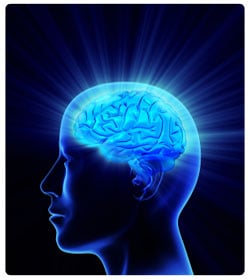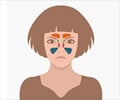Migraine
Migraine is a recurrent condition, which may or may not be accompanied by a headache. In many people it is a triad of headache, nausea/vomiting and ‘aura’.
An intense, throbbing pain that, affects one side of the head (unilateral), often accompanies the headache. Sometimes both sides of the head can be affected (bilateral). The unilateral headache often change sides; in fact if it continues to affect one side then there is reason to worry and the doctor should investigate the possibility of an underlying problem.
The aetiology of a migraine is not understood although a genetic predisposition is suggested. Its prevalence is about 20% in female and 6% male. In the majority of the sufferers, it surfaces before the person is 40 years of age.
What happens during an attack of migraine? The temporal artery located outside the skull, beneath the skin of the temple region, has nerves attached to it. During an episode of migraine, the temporal artery enlarges (vasodilates) stretching the nerves, which in turn releases chemicals. These chemicals lead to further enlargement of the artery leading to inflammation and pain.
The sympathetic nervous system is responsible for our reaction to stress and pain; for our ‘fight or flight’ response. These nerves get activated during a migraine attack. The heightened sympathetic activity results in -
- Increased sensitivity to light and sound
- Blurred vision
- Decreased circulation, resulting in cold hands and feet and skin pallor
The increased sympathetic surge of hormones in the intestine leads to
- Nausea
- Vomiting
- Diarrhea
- Delayed emptying of the bowel which in turns slows the absorption of oral drugs for migraine
A migraine headache usually is aggravated by daily activities like walking upstairs. An approximate estimate reveals that warning symptoms precede 40%-60% of migraine attacks. These signs may last for hours or upto days. Sleepiness, yawning, fatigue, depression, irritability, euphoria, and cravings for sweet/ salty foods are some of the prominent warning signs.
An estimated 20% of migraine headaches are preceded by, or occur in concurrence with, an aura. This may be experienced as brightly colored zigzag flashes of light, or as a hole (blind spot) in the visual field. Pins-and-needles sensations on the arm or around the mouth and nose, auditory hallucinations and experiencing funny tastes and smells are less commonly occurring auras. The most famous but a rare form of aura’s is described as ‘Alice in Wonderland Syndrome’; and results in distortions of body images. The distortions may make a person look small or big or even fly around a room. The fantasay world created in the novel of Lewis Carol maybe inspired by his own migrane headaches.
Neurological dysfunction occurs as a result of complicated migraines. Vertebrobasilar migraines causes dysfunction of the brainstem and this may result in dizziness, fainting, vertigo and double vision. Hemiplegic migraines mimic a stroke, causing one side of the body to be paralyzed. This reaction is temporary but may be prolonged.
The sufferers tend to feel drained after an attack of migraine. Sometimes these episodes may recur.
















